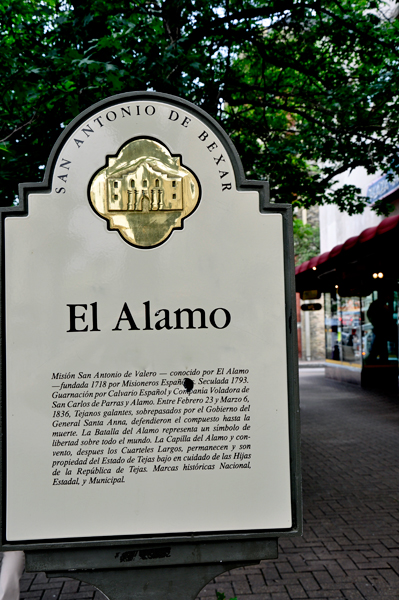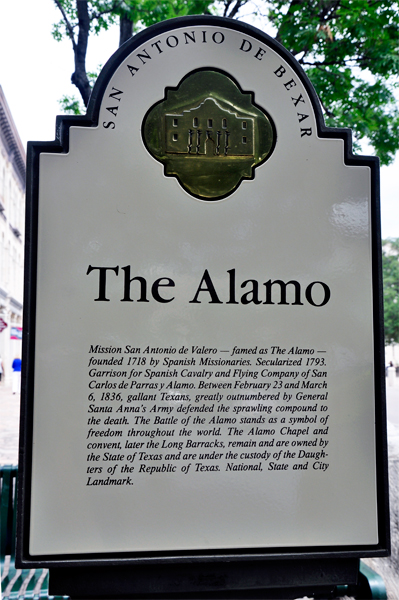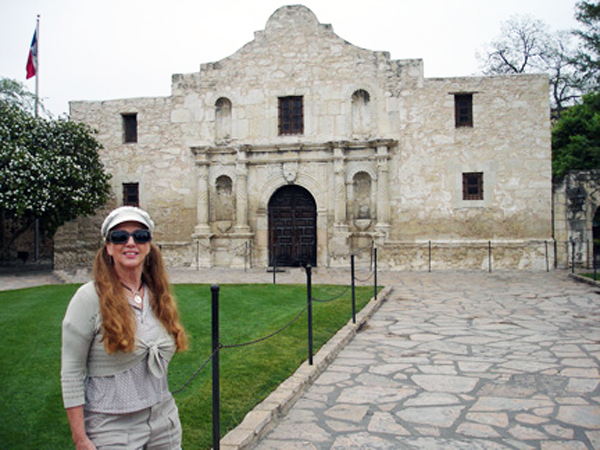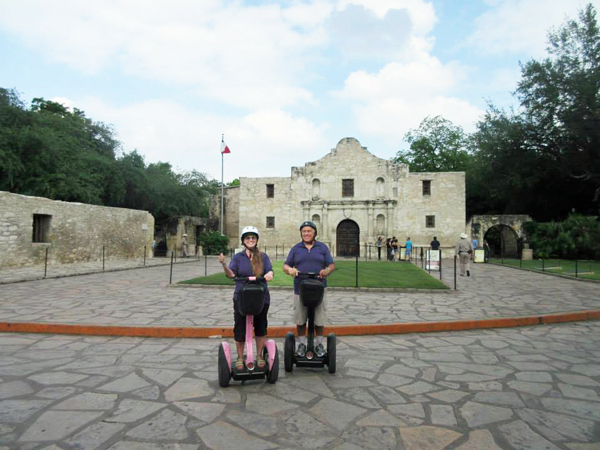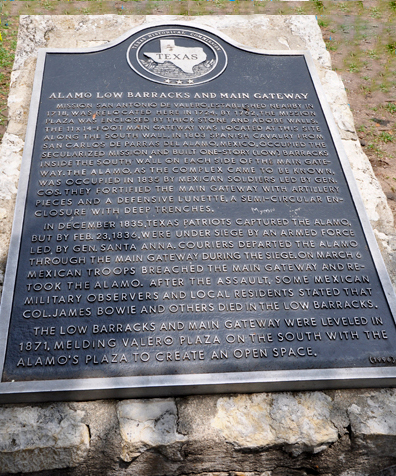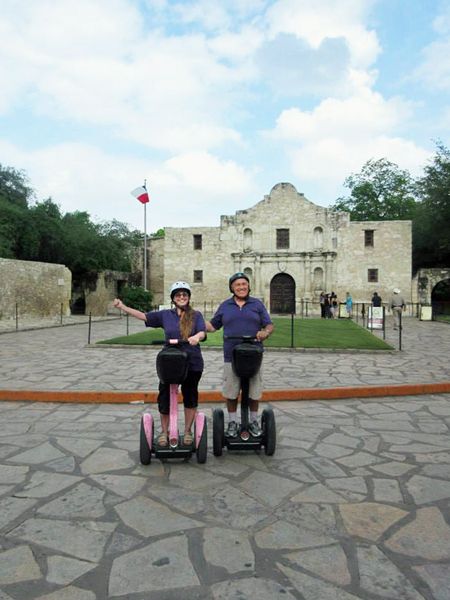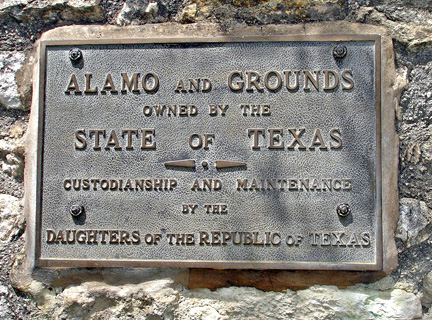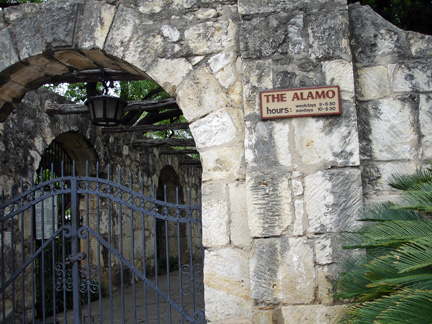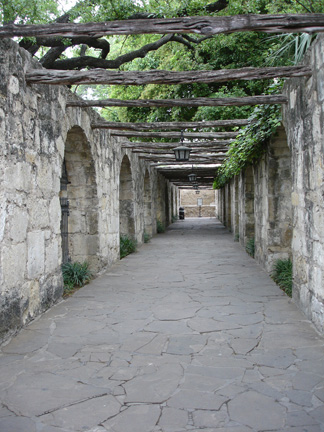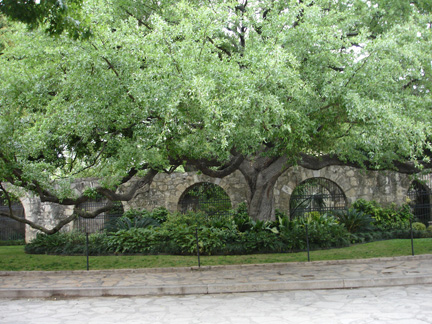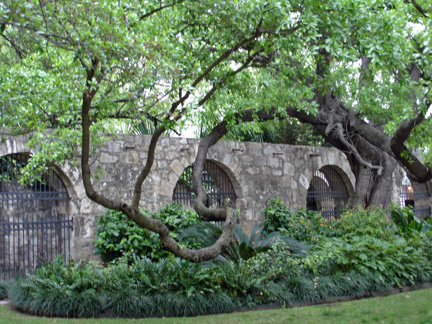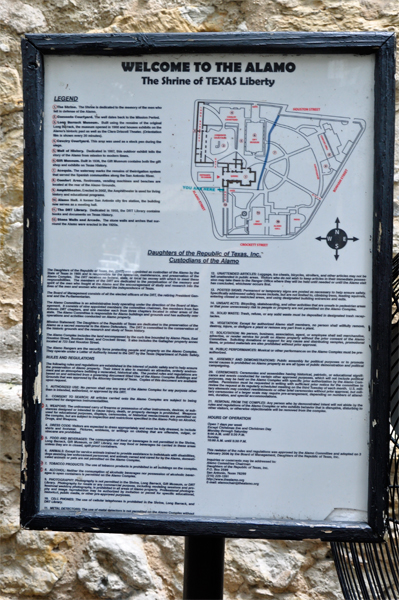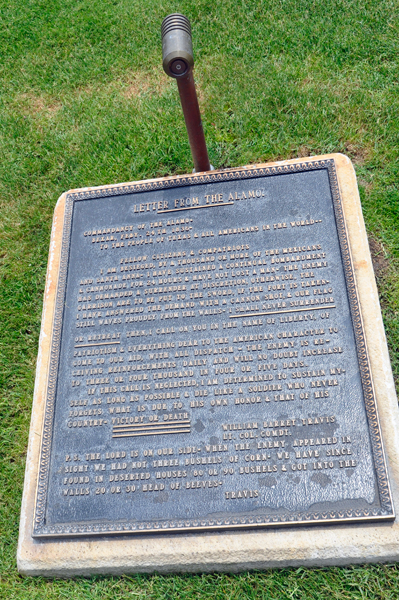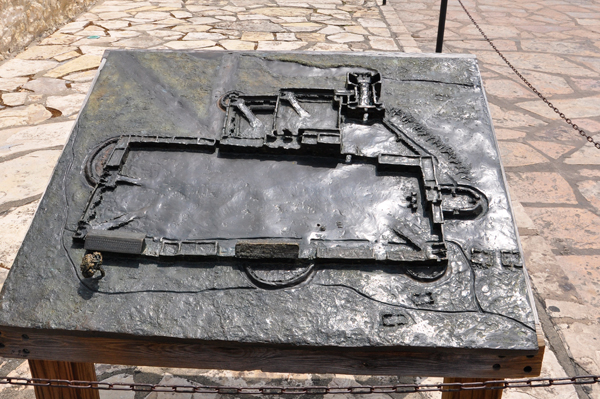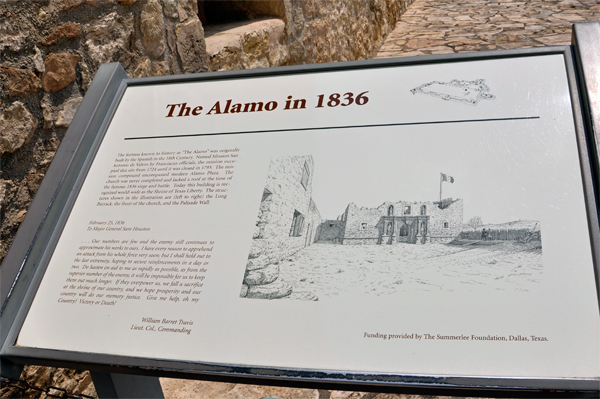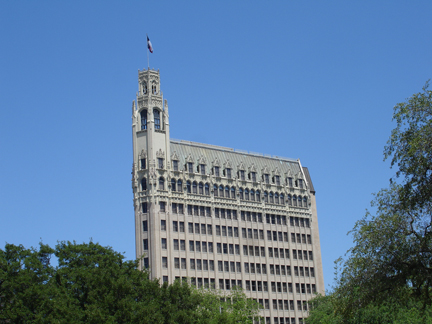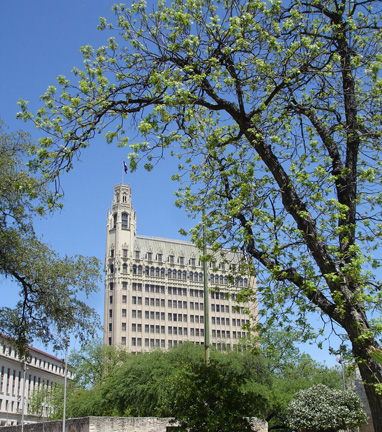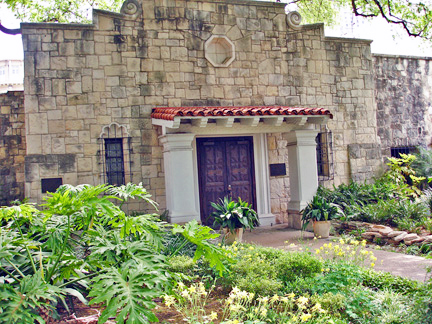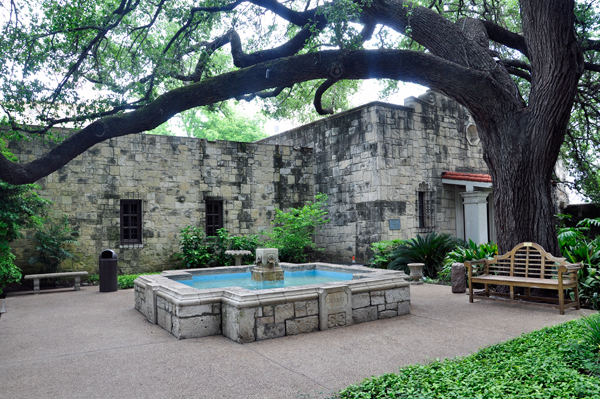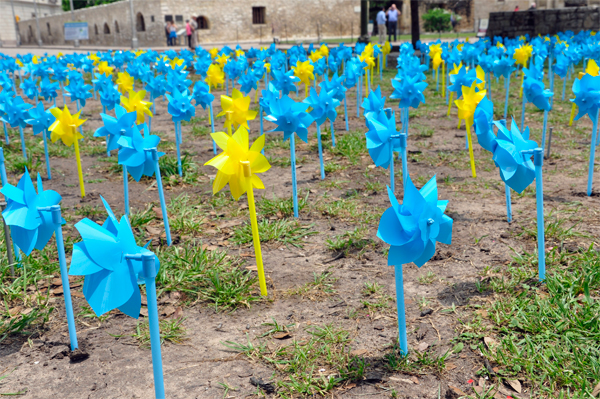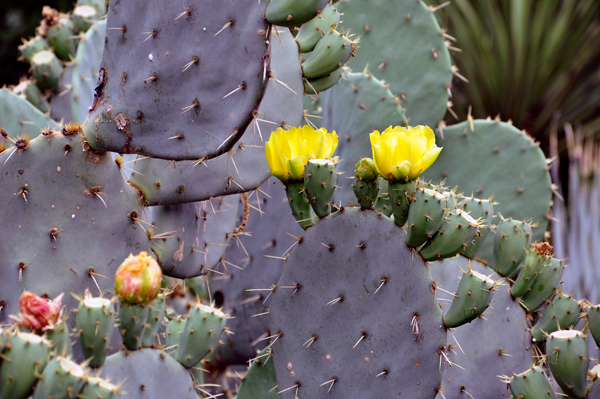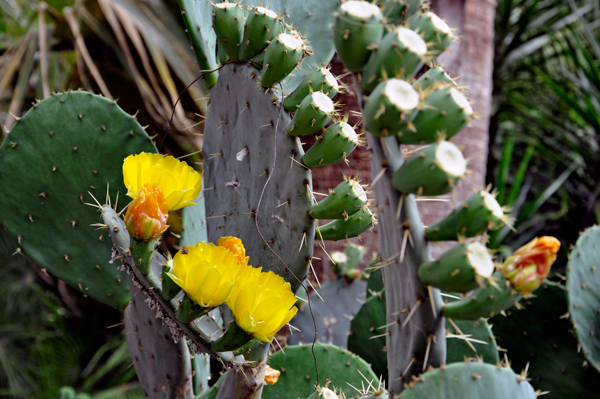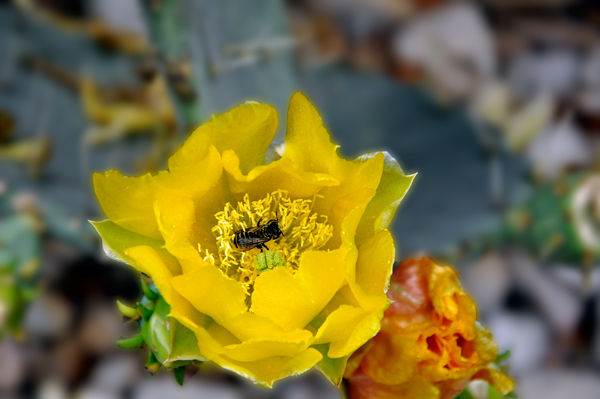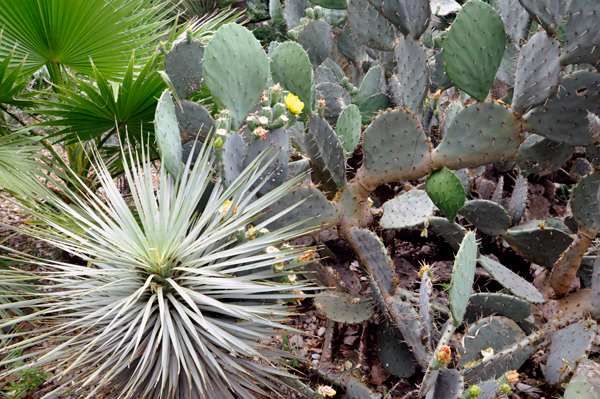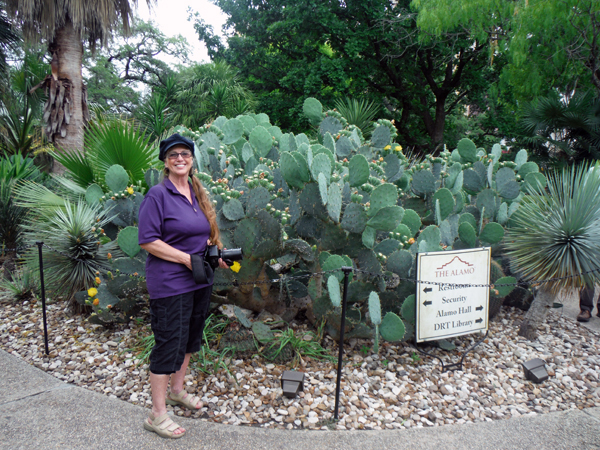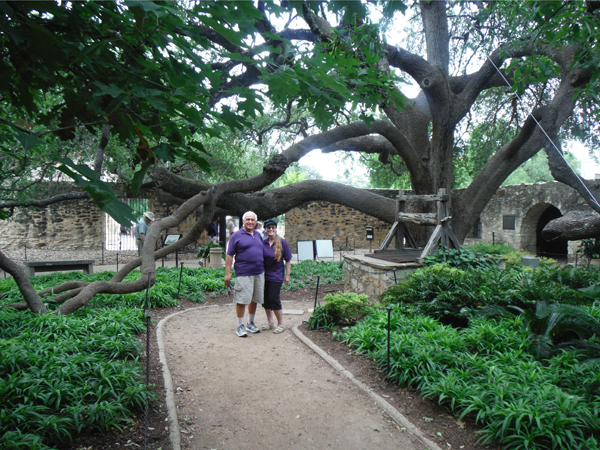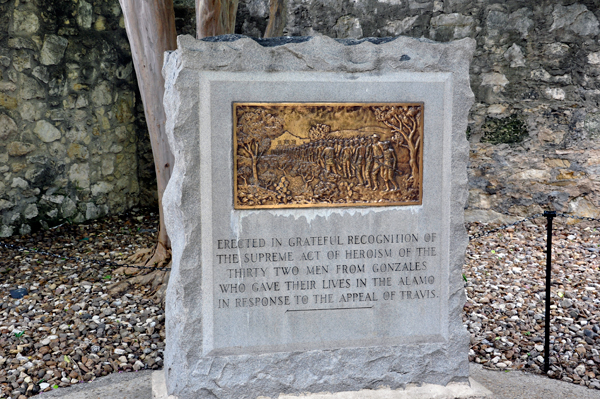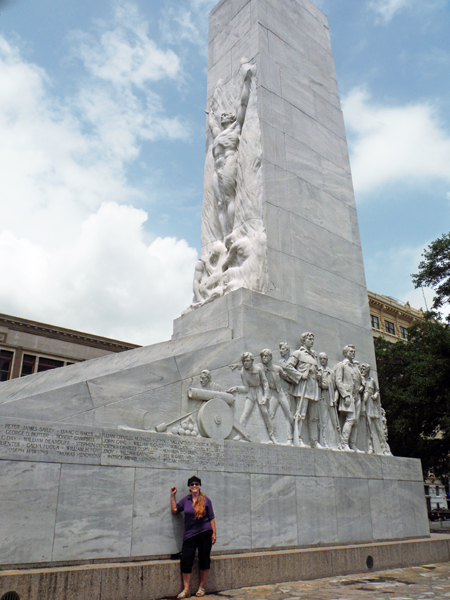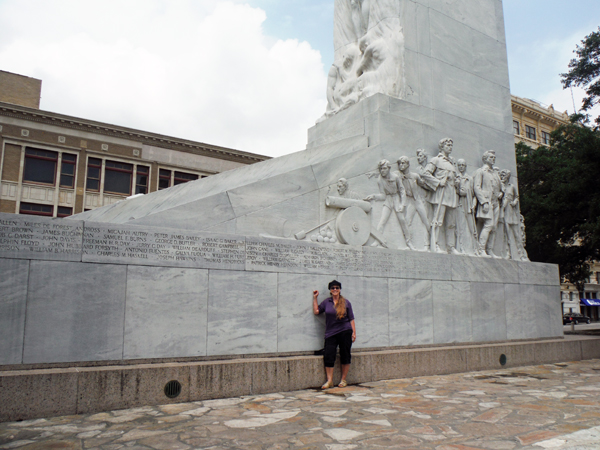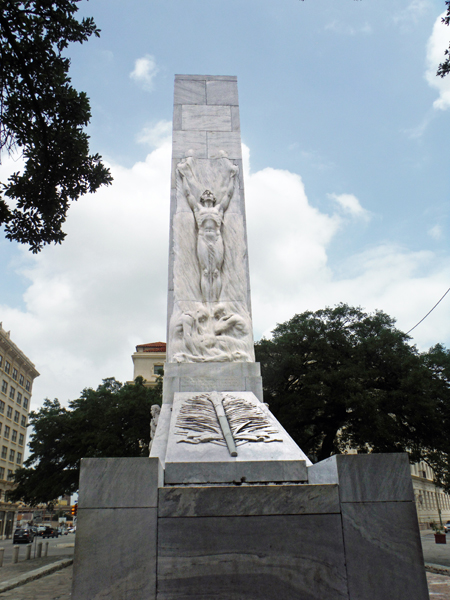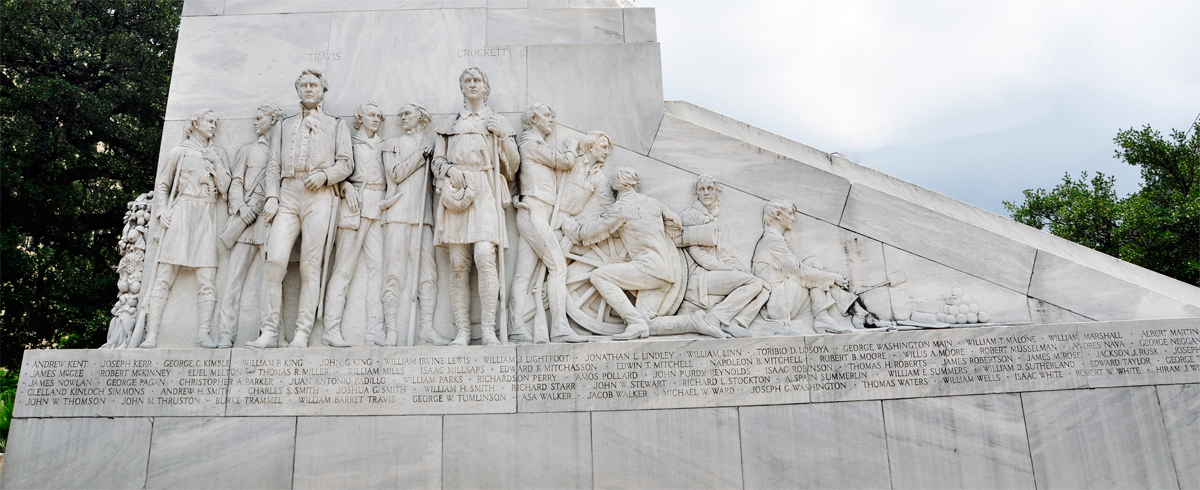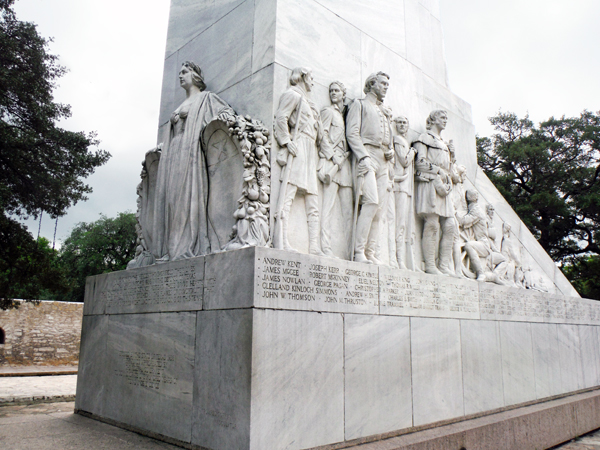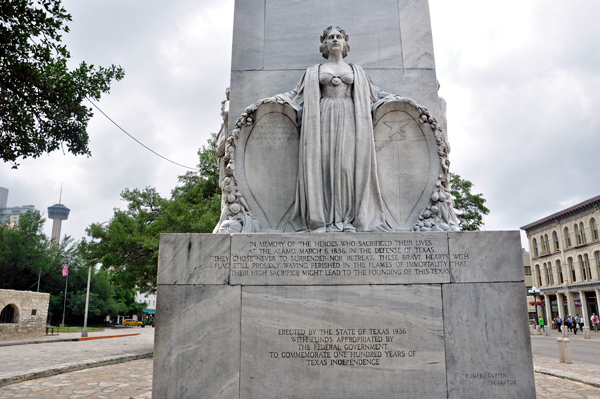 The
Alamo began as the San Antonio de Valero, a Spanish Mission, in the early
1700’s, one of the first in Texas. The establishment of this mission
played a crucial role in the settlement of San Antonio, Texas and the
Southwest. The San Antonio de Valero Mission was built to provide local
indigenous people, or Indians, with protection from hostile tribes and
conversion to the Catholic faith, the state religion of Spain at that
time. Accordingly, the first residents of San Antonio de Valero were members
of Indian tribes like the Payaya, Sama, Pachaque and other Coahuiltecan
Indian tribes. Spanish missionaries provided religious services and directed
the work of those residing inside the Mission. Those residents who died
in the mission were often buried in front of the Church, according to
Spanish tradition. Consequently, the area in front of the Alamo Shrine
represented with a patch of green grass, the Campo Santo, is considered
hallowed burial ground. The
Alamo began as the San Antonio de Valero, a Spanish Mission, in the early
1700’s, one of the first in Texas. The establishment of this mission
played a crucial role in the settlement of San Antonio, Texas and the
Southwest. The San Antonio de Valero Mission was built to provide local
indigenous people, or Indians, with protection from hostile tribes and
conversion to the Catholic faith, the state religion of Spain at that
time. Accordingly, the first residents of San Antonio de Valero were members
of Indian tribes like the Payaya, Sama, Pachaque and other Coahuiltecan
Indian tribes. Spanish missionaries provided religious services and directed
the work of those residing inside the Mission. Those residents who died
in the mission were often buried in front of the Church, according to
Spanish tradition. Consequently, the area in front of the Alamo Shrine
represented with a patch of green grass, the Campo Santo, is considered
hallowed burial ground.
"Mission San Antonio de Valero" has not always been at this
location. The original mission was founded near the headwaters of San
Pedro Creek in 1718. In 1719 the mission was relocated a short distance
to the south of where we are today. A 1724 storm destroyed structures
at the new site, prompting Spanish officials to relocate the mission to
its present spot. It was the mission compound constructed here at the
1724 location that later gained fame as the Alamo. While this is the third
spot for Mission San Antonio de Valero, it is the only place the "Alamo"
has ever been.
Construction of the Convento (or Long Barrack) began in 1724, shortly
after the mission was relocated to this site. Records indicate it was
completed in 1744. That makes it more than 250 years old. The Long Barrack
has undergone several renovations and reconstructions. In 1847 the U.S.
Army repaired the structure: drawings from that period show it with two
full stories. By 1876 the military had relocated their facilities to what
would become Fort Sam Houston. During the 1870s and 1880s, merchants used
the Long Barrack as a store. A wooden framework constructed to resemble
a fort covered much of the Long Barrack. The wooden framework and the
second story were stripped away in 1913 in an effort to remove the "unoriginal"
portions of the building, leaving only the walls standing. The walls were
repaired and roofed in 1968, as part of the renovations to the Alamo for
HemisFair, creating the Long Barrack Museum.
Construction on the church began in 1744. By 1756, however, the walls
collapsed, prompting construction on the present church. All work ceased
by 1762. Neglected, the roof arches and bell towers fell, filling the
building with rubble. The church was fortified by both the Mexicans and
Texans during the Texas Revolution, when the rubble was moved to the east
end of the building to form a cannon platform. After the battle, the church
remained in ruins until the U.S. Army began repairs in 1850. They added
a gabled roof (the first time the church had a complete roof) and the
"hump" to the facade. Like the Long Barrack, the church also underwent
a mercantile phase following the army's departure. While the walls of
the church are nearly 250 years old, the building has only had its world-famous
look for 150 years.
What Happened At The Alamo After The Battle
The Mexican Army maintained control of San Antonio until May 1836. That
month the Mexican garrison received orders to demolish the Alamo before
they withdrew. They knocked down some of the outer walls of the compound,
including the log wall known as Crockett's Palisade, so it could not be
easily refortified by the Texans.
Many of the wounded Mexican soldiers were housed in San Antonio following
the battle. Several Texan doctors captured with Fannin's command were
sent to San Antonio to help tend Santa Anna's wounded, who were then evacuated
in May and June during the withdrawal. |
